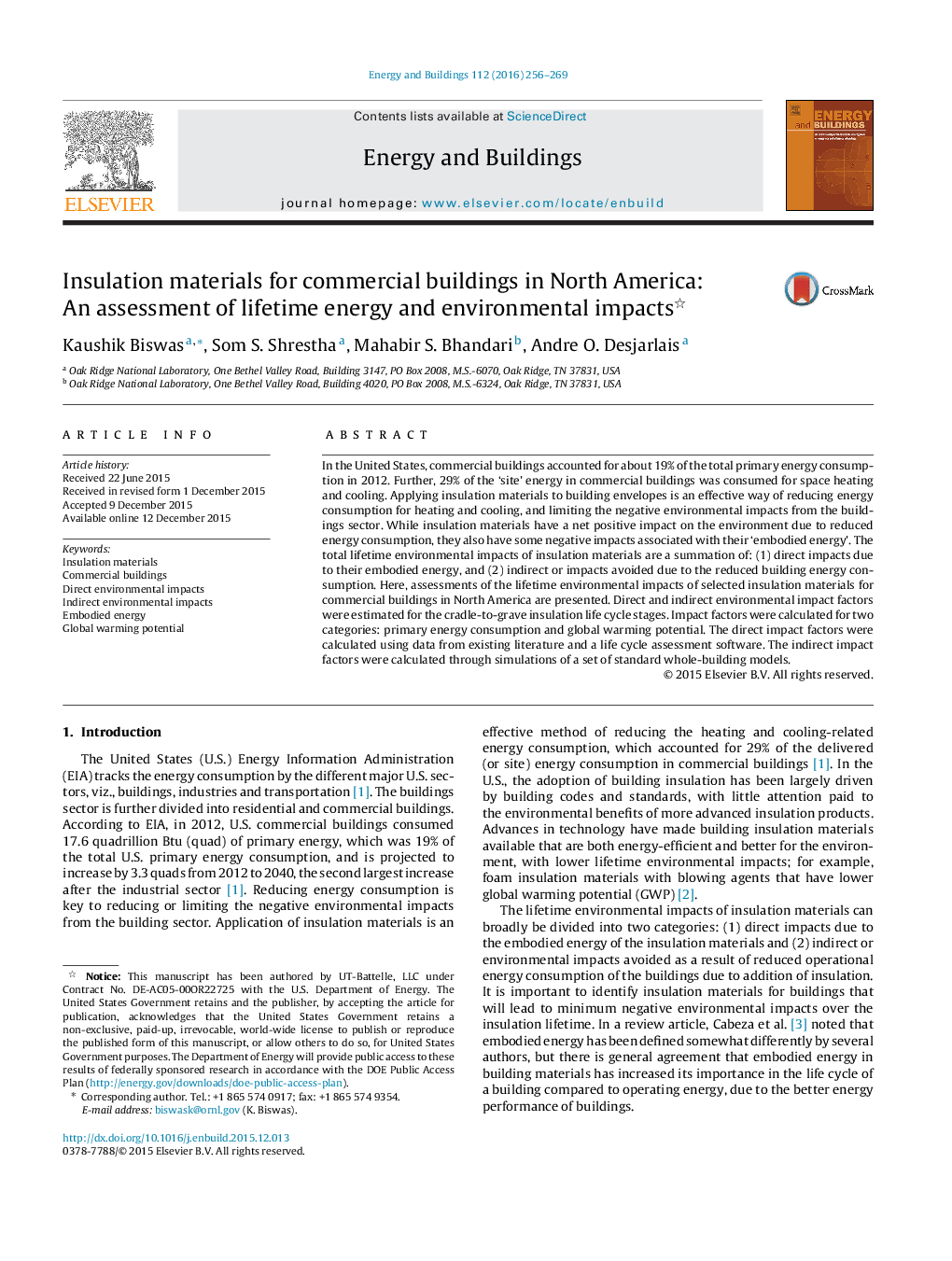| Article ID | Journal | Published Year | Pages | File Type |
|---|---|---|---|---|
| 6730757 | Energy and Buildings | 2016 | 14 Pages |
Abstract
In the United States, commercial buildings accounted for about 19% of the total primary energy consumption in 2012. Further, 29% of the 'site' energy in commercial buildings was consumed for space heating and cooling. Applying insulation materials to building envelopes is an effective way of reducing energy consumption for heating and cooling, and limiting the negative environmental impacts from the buildings sector. While insulation materials have a net positive impact on the environment due to reduced energy consumption, they also have some negative impacts associated with their 'embodied energy'. The total lifetime environmental impacts of insulation materials are a summation of: (1) direct impacts due to their embodied energy, and (2) indirect or impacts avoided due to the reduced building energy consumption. Here, assessments of the lifetime environmental impacts of selected insulation materials for commercial buildings in North America are presented. Direct and indirect environmental impact factors were estimated for the cradle-to-grave insulation life cycle stages. Impact factors were calculated for two categories: primary energy consumption and global warming potential. The direct impact factors were calculated using data from existing literature and a life cycle assessment software. The indirect impact factors were calculated through simulations of a set of standard whole-building models.
Related Topics
Physical Sciences and Engineering
Energy
Renewable Energy, Sustainability and the Environment
Authors
Kaushik Biswas, Som S. Shrestha, Mahabir S. Bhandari, Andre O. Desjarlais,
